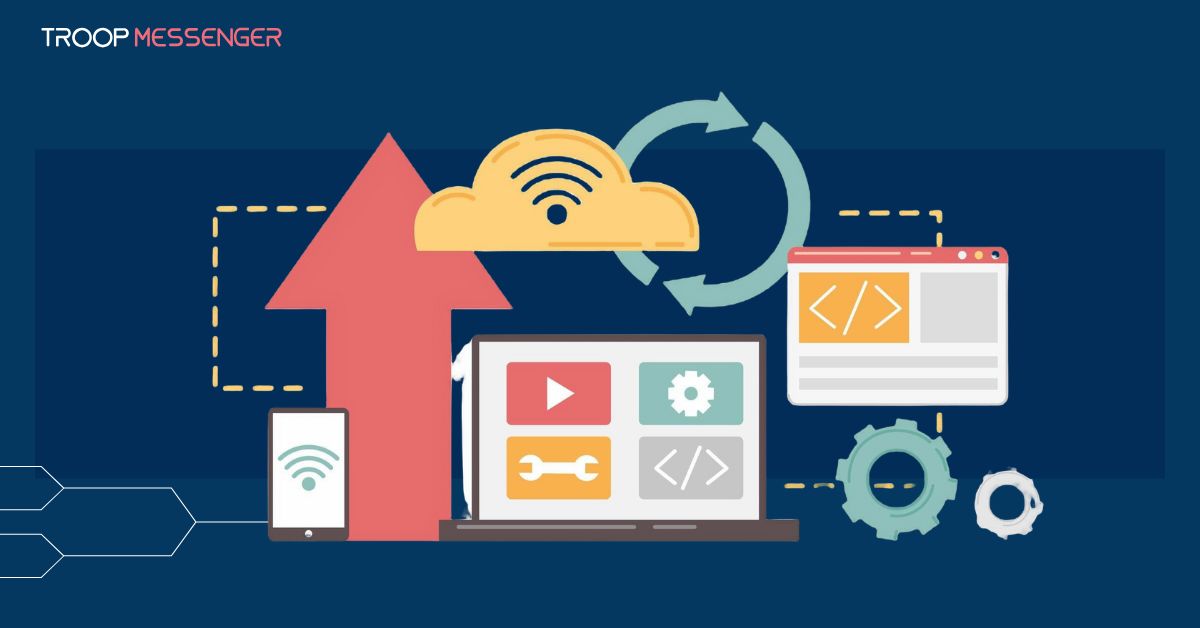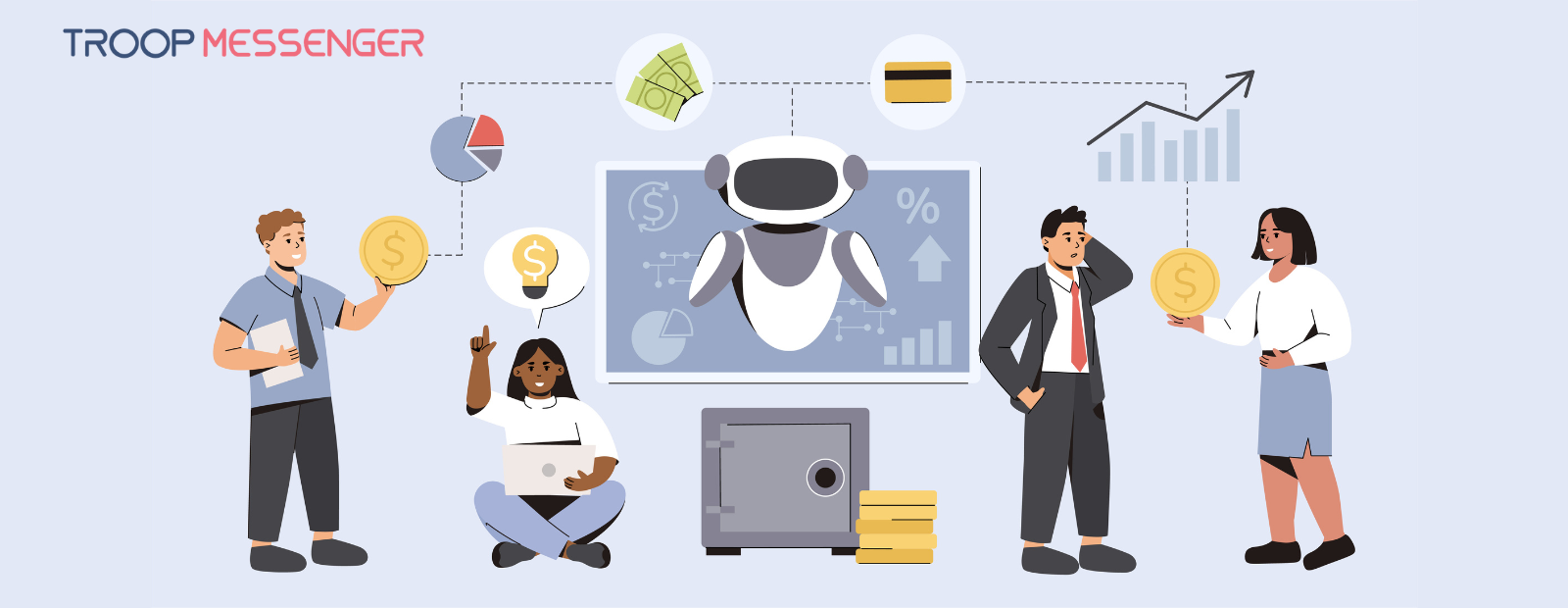Connect with us

How to Successfully Scale Your SaaS Business
With the tech landscape continuously evolving and the fierce competition, scaling is no longer just an option for SaaS businesses. It’s a necessity. The SaaS industry has a staggering 90% failure rate. Without strategic growth, your SaaS business might just be one of those many casualties.
But to successfully scale SaaS businesses, you need more than just luck.
Here are five best practices you need to follow to ensure your SaaS business’ lasting success.
5 Proven Techniques for Scaling Your SaaS Business Successfully
From optimizing price strategies to fostering a strong company culture, these best practices will propel your SaaS business to greater heights while ensuring sustainability.
1. Focus on customer retention
Customer retention is a key driver of long-term growth for SaaS businesses. When you increase customer retention by 5%, you can increase profits by as much as 95%. That number can go even higher since 72% of satisfied customers–a.k.a. the customers you retain–are likely to share their positive experiences with a brand with six or more people. More than 80% of consumers say they trust the recommendations of people they know more than any other form of marketing.
Let’s not forget the fact that retaining your existing customer is also more cost-effective than acquiring one. Expect to pay five times your customer retention costs as customer acquisition costs. That makes sense since to get a new customer, you’d need to invest in marketing and lead generation (more on this later), onboarding, and more to ensure you derive value from them. In customer retention, on the other hand, the customer is already familiar with your brand. Many of those expenses you’d typically incur in customer acquisition–like lead generation, for example— no longer apply.
That’s not to say you should no longer acquire new customers, of course. The point is, if you have a limited budget, focus on customer retention more than customer acquisition. This way, you get the most value from the money you spend.
Now, how exactly can you boost customer retention rates? Just keep your customers happy.
Offer high-quality SaaS products in the first place. Also, make it a habit to engage with your customers. If there are customer inquiries, answer them–and promptly. Make sure you have a dedicated customer success team and strategy in place.
When you put your SaaS customer front and center in everything that you do, you give them no reason to jump ship and switch to your competitor.
2. Leverage data
You can’t just play the guessing game in the SaaS industry (and any industry for that matter). To scale SaaS businesses effectively, all your decisions should be data-driven. In fact, the reason you launched your SaaS business in the first place should have been based on existing data. Maybe you found a gap in the market that prompted you to launch your SaaS product? Or perhaps you saw little demand for your competitor’s offering because of what the target market says is its low quality?
Here are some other ways you can leverage data to make informed decisions:
Product development
Send surveys and conduct interviews of customers to determine whether your SaaS product is hitting the mark. Ask your product managers to incorporate the valid feedback into your product roadmap. When you gather user feedback about your actual product regularly and make adjustments accordingly, you can ensure what you offer makes consumers happy. You can boost sales and increase your loyal customers, which are key to scaling SaaS businesses.
User onboarding
You can use your audience data to personalize user onboarding experiences. Look at their characteristics, preferences and their previous interactions with your brand to determine what onboarding content to deliver and what modes of delivery to use.
You can also gather customer feedback about your onboarding processes via surveys. Use this data to improve your customer onboarding.
Customer retention
Analyze your customer data to identify patterns and trends among clients who churn. This customer churn analysis will enable you to craft better strategies to retain your clients. As we mentioned earlier, customer retention is a proven strategy to scale SaaS businesses.
Marketing
We’ll talk more about how you can leverage data for effective SaaS marketing later.
When you act based on data, you can ultimately gain a competitive advantage that leads to sustainable growth.
3. Invest in marketing and lead generation
As a business owner, you need customers to scale your SaaS company, both old and new. That’s why you should invest in marketing and lead generation. When you get your product in front of potential customers and customers and attract them to your brand, you increase the chances of converting them.
You can leverage both inbound and outbound marketing strategies to boost conversion rates.
Inbound marketing is great for lead generation. Just create valuable content like blog posts, webinars and whitepapers and post it across your marketing channels. With content marketing, the goal is to position yourself as a thought leader in your industry.
But what marketing channels should you have in the first place? Well, make sure you have a website, for one. Find a domain name that’s easy to remember and reflects your branding. With its over 5 billion users, social media should also be included in your list of marketing channels.
You’ll need to implement other strategies to boost your content visibility. Search engine optimization best practices like using relevant keywords and internal linking, for instance, can help your site rank in search engine results pages. You can boost your visibility on social media by using the right hashtags. Get LinkedIn, Facebook and Instagram followers as well. The more followers you get, the more people you reach with a single post.
As a final tip, don’t discard outbound marketing strategies such as trade shows, cold emailing and cold calling and even traditional media ads.
Whatever marketing strategies you choose, make sure you have a deep understanding of your target customer base. Look at your website and social media analytics to determine audience demographics, interests, and pain points. You can also send them surveys to ask them about their preferences directly. With these valuable insights, you can create content that resonates with them and prompts them to take your desired action.
4. Optimize pricing strategy
To scale SaaS businesses, you need the right product pricing. Even if your product is great, if people can’t afford it, you won’t generate sales.
You can experiment with different pricing strategies to find that sweet spot for your business:
Subscription-based pricing model: This type of pricing is common in the SaaS industry. Customers pay a recurring fee on a monthly or annual basis to access the SaaS product. It attracts customers because of its lower fees. However, if the price increases over time, you can lose existing customers.
Usage-based pricing model: In this model, the price a customer pays depends on their consumption. This may be ideal for corporate clients. Instead of paying for how much they expect to need in a subscription model, they pay for how much they actually use.
Tiered pricing model: This model entails creating different price points that increase or decrease based on the core features, benefits, or services offered. Customers can choose the option that best suits their needs. SaaS brands also typically incentivize users to move up the tiers.
Value-based pricing model: If you use this model, you set your prices at that price point you believe consumers will be willing to pay.
Experimenting with pricing packages shouldn’t be a one-off thing, though. Remember, customer expectations and market trends change. You want to make sure you’re always ahead of the curve.
5. Foster a strong company culture
Your employees can be key drivers of your SaaS business growth. Happy employees are 20% more productive than unhappy employees. What makes them happy? A strong company culture. Almost half of the people who are unhappy with their job and are currently looking for another say the company culture is their main reason for wanting to leave.
Then there’s the fact that employee satisfaction has also been found to lead to better customer interactions and, therefore, happy customers.
But how do you foster a strong company culture to scale SaaS businesses? Here are some tips:
Encourage employees to share their ideas: Make your employees feel like their opinions matter and they’ll appreciate you for it.
Create an employee recognition program: Reward employees who achieve excellent results in the workplace. This will motivate them (and their peers) to do even better.
Be transparent: If you want your employees to trust you, they need to feel like you’re not hiding anything from them.
Consider sending an email newsletter regularly to keep them in the loop about important company matters.
Conclusion
Scaling SaaS businesses can be hard. But with the proper planning, it can be done.
Focus on customer retention rather than customer acquisition to get the most out of your resources. Also, leverage data in everything that you do, from product development to marketing. Speaking of marketing, invest in that to attract customers who fuel SaaS growth. Also, optimize your pricing strategies. The right pricing will make it easy for you to generate sales. As a final tip, foster a strong company culture. When your employees are happy, they are more productive and perform better.
Ready to scale your SaaS business?








